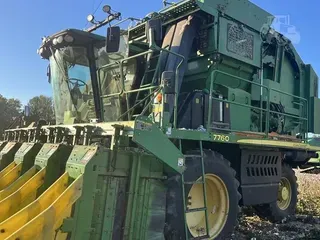Its been a long harvest season, and youre ready to get your equipment ready for winter storage. But before you roll that equipment in for its winter nap, ensure your equipment inspection includes that critical component: the tires.
As you are doing your final inspection before you move equipment into winter storage, take time to look at the tires closely, says Scott Sloan, ag product manager, Titan and Goodyear Farm tires. Just as you would inspect your equipment and repair any issues so the equipment is ready to go in the spring, tires need a close inspection as well to ensure they are ready to go in the spring and you address any issues before they become major headaches.
Are there any abnormalities in the tire? Separations? Are there slices or cracks in the tire that need closer inspection by a tire dealer? Have you closely inspected that one tire that continually needed air added during the season? Asking these questions is an important step in determining the health of equipment tires. Id also recommend getting your local tire dealer out to walk around with you. A second set of eyes might catch something you can take care of in the off-season and before you are pressed for time in the spring, Sloan says.
A best-case scenario for implements is to take the weight off the tires by putting the equipment on jacks. Thats not always possible, but its a great way to get the most out of your tires, Sloan says.
[RELATED: Better corn hybrids continue to take a toll on farm tires]
Sloan warns producers that exposure to the weather, more specifically sunlight and ozone, can subject tires to premature damage. And that damage isnt limited to equipment being stored outside. Producers who are storing equipment in heated sheds, especially with electric heating systems, can experience damage from the ozone produced by the heaters, Sloan says. And if you are welding nearby stored equipment the same damage can occur.
Sloan recommends that tires should be covered where practical. Its not always possible, but any time you can put covers over the tires it helps reduce the damage the sun and ozone causes, he says.
And to take pressure off the tires, Sloan recommends reducing tire pressure prior to storage. Its best to have the tires at the lower end of the inflation range if practical, he says.

